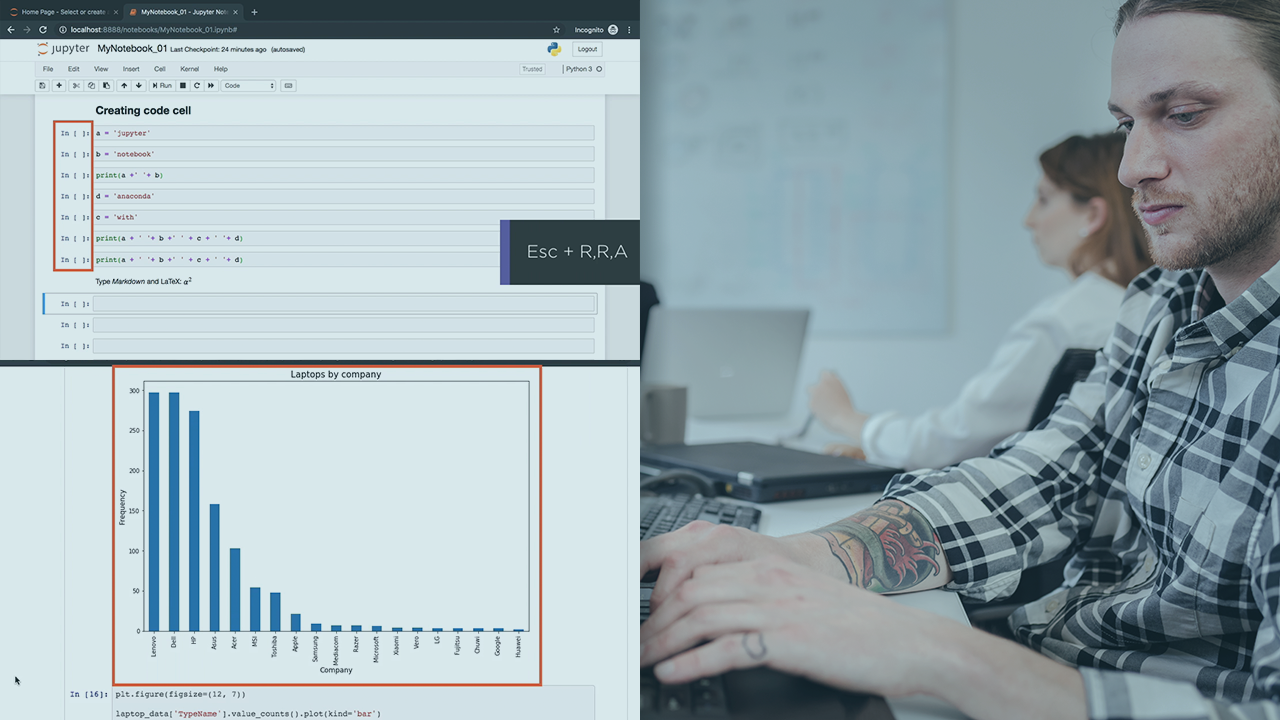- Course
Create and Share Analytics with Jupyter Notebooks
This course covers the important aspects of working with Jupyter notebooks, including installation and the role of kernels, magic functions, and running shell commands. In addition, the power of cloud-hosted Jupyter notebooks is explored on AWS, Microsoft Azure as well as the Google Cloud Platform.

- Course
Create and Share Analytics with Jupyter Notebooks
This course covers the important aspects of working with Jupyter notebooks, including installation and the role of kernels, magic functions, and running shell commands. In addition, the power of cloud-hosted Jupyter notebooks is explored on AWS, Microsoft Azure as well as the Google Cloud Platform.
Get started today
Access this course and other top-rated tech content with one of our business plans.
Try this course for free
Access this course and other top-rated tech content with one of our individual plans.
This course is included in the libraries shown below:
- Data
What you'll learn
Python has exploded in popularity in recent years, largely because it makes analyzing and working with data so incredibly simple. Jupyter is an execution environment rather than a fully-fledged IDE, but even so, notebooks have various important features that are worth understanding thoroughly. In this course, Create and Share Analytics with Jupyter Notebooks, you will learn how Jupyter notebooks are a key driver of Python’s popularity, by providing an incredibly intuitive, interactive environment for executing Python programs. First, you will learn how to get up and running with Jupyter notebooks, and how best to leverage features such as markdown to enhance the readability of your code. Next, you will discover how more advanced features such as magic functions work, and how the next generation offering from Jupyter, named JupyterLab goes even further towards a fully-fledged development environment. Finally, you will round out your knowledge by working with cloud-hosted Jupyter notebooks on each of the major cloud platforms. When you’re finished with this course, you will have the skills and knowledge to leverage the full power of Jupyter notebooks and Jupyterlab, particularly in the context of cloud-hosted notebooks for distributed and collaborative use-cases.
Create and Share Analytics with Jupyter Notebooks
-
Version Check | 16s
-
Module Overview | 1m 23s
-
Prerequisites and Course Outline | 1m 29s
-
Introducing Jupyter Notebooks | 6m 24s
-
Demo: Windows - Installing Anaconda and Jupyter Notebooks | 5m 14s
-
Demo: Windows - Installing Jupyter Notebooks Using Pip | 4m 16s
-
Demo: MacOS - Installing Anaconda and Jupyter Notebooks | 5m 13s
-
Demo: MacOS - Installing Anaconda and Jupyter Notebooks Using the Command Line Installer | 3m 50s
-
Demo: Running Jupyter Notebooks and Jupyter Lab in Docker Containers | 4m 54s
-
Demo: MacOS - Installing Jupyter Lab Using Pip | 4m 48s
-
Module Summary | 1m 23s

